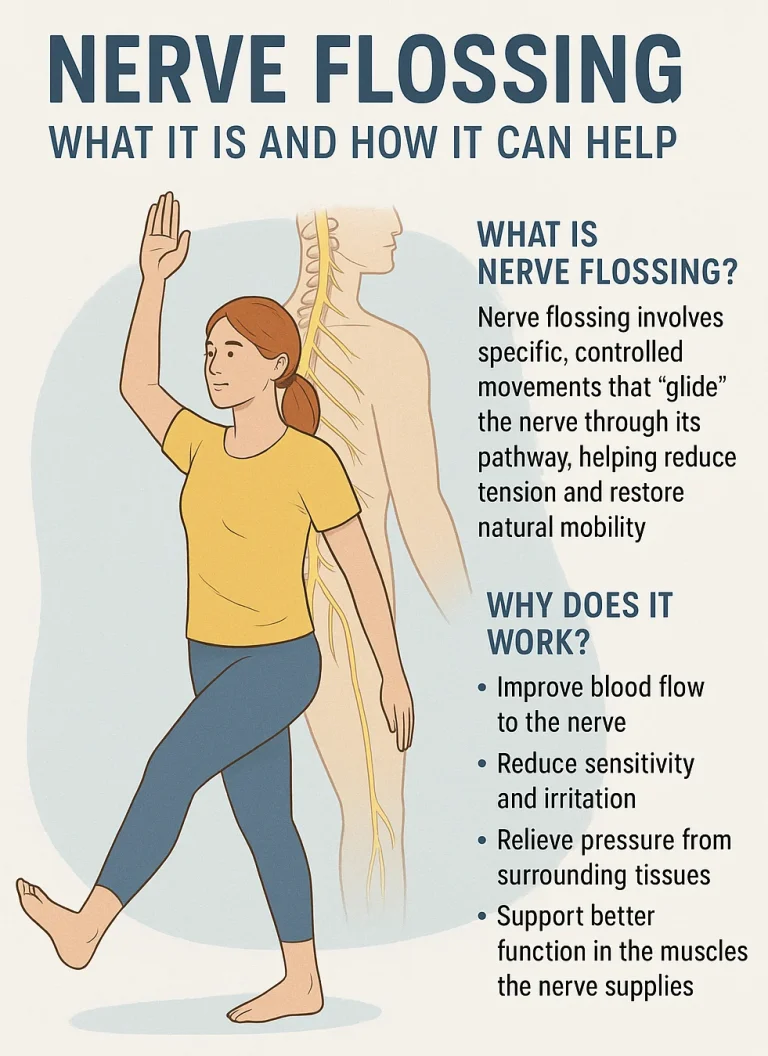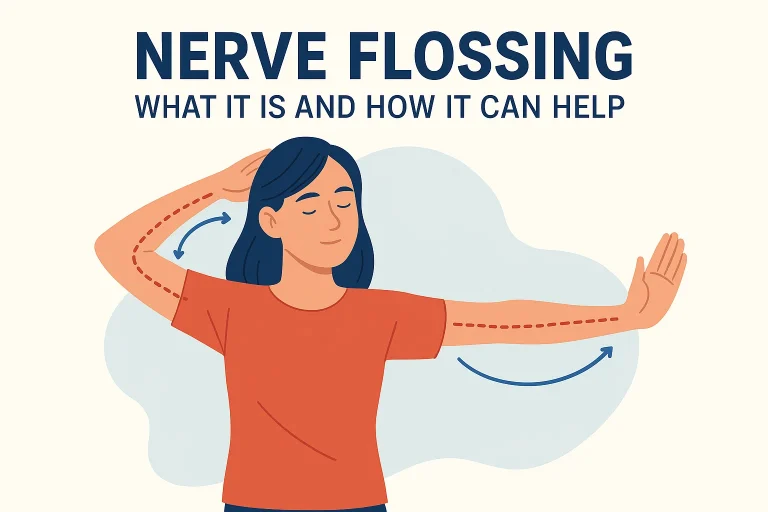If you’ve ever felt tingling, numbness, or shooting pain down your arm or leg, you may have experienced nerve irritation. While joints and muscles get most of the attention when it comes to mobility, your nervous system also needs to move freely. That’s where a technique called nerve flossing (or nerve gliding) comes in
Important Safety Note
While nerve flossing can be beneficial, it must be done correctly. Incorrect technique or overuse may worsen symptoms.
This blog is for educational purposes only and is not medical advice. Always consult a licensed healthcare practitioner-such as a chiropractor, physiotherapist, or medical doctor-before starting any new exercises, especially if you have nerve pain or numbness.

What Is Nerve Flossing?
Nerve flossing is a gentle exercise technique designed to improve the mobility of irritated or compressed nerves.
Just like a muscle can feel tight, nerves can also become restricted due to surrounding tissues, inflammation, or poor posture.
Nerve flossing involves specific, controlled movements that “glide” the nerve through its pathway, helping reduce tension and restore natural mobility.
Think of it as giving your nerves more room to move-like sliding a cord back and forth through a protective sleeve
Why Does It Work?
Healthy nerves should move smoothly as your body bends, stretches, and twists.
When that mobility is compromised, you may experience discomfort such as: – Tingling or “pins and needles” sensations – Numbness – Sharp or radiating pain – Weakness in certain muscle groups
By gently mobilizing the nerve with flossing movements, you may help: – Improve blood flow to the nerve – Reduce sensitivity and irritation – Relieve pressure from surrounding tissues – Support better function in the muscles the nerve supplies
When Is Nerve Flossing Recommended?
Nerve flossing may be suggested as part of a broader treatment plan for conditions like:
- Sciatica
- Carpal Tunnel Syndrome
- Cubital Tunnel Syndrome
- Lumbar or Cervical Disc Herniations
It’s important to note that nerve flossing is not a stand-alone fix-it often works best when combined with chiropractic adjustments, soft tissue therapy, strengthening, and postural changes
The Chiropractic Connection
Chiropractors often recommend nerve flossing as part of a comprehensive care plan. By restoring proper spinal alignment and relieving joint or soft tissue restrictions, chiropractic adjustments can complement nerve mobility exercises-helping you move more freely and comfortably.
This blog is for educational purposes only and is not medical advice. Always consult a licensed healthcare practitioner-such as a chiropractor, physiotherapist, or medical doctor-before starting any new exercises, especially if you have nerve pain or numbness.

